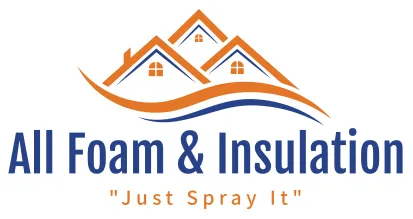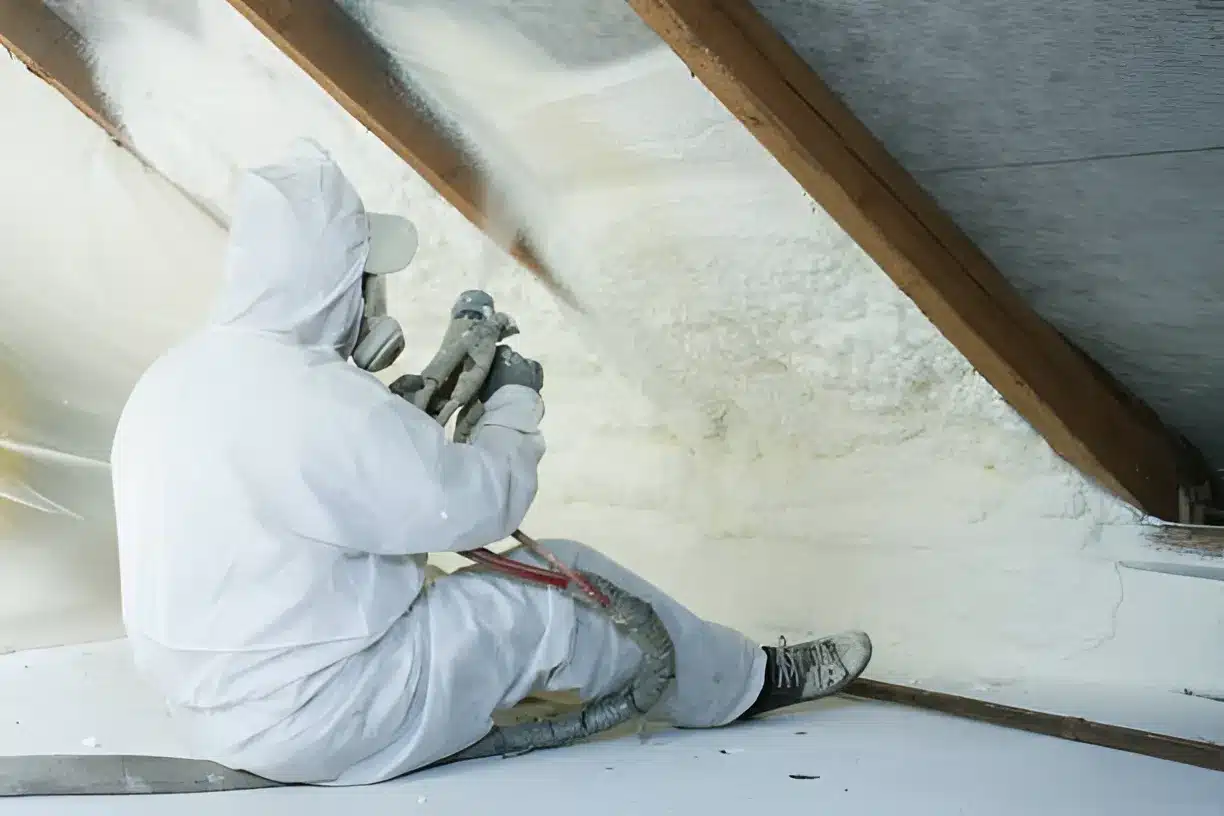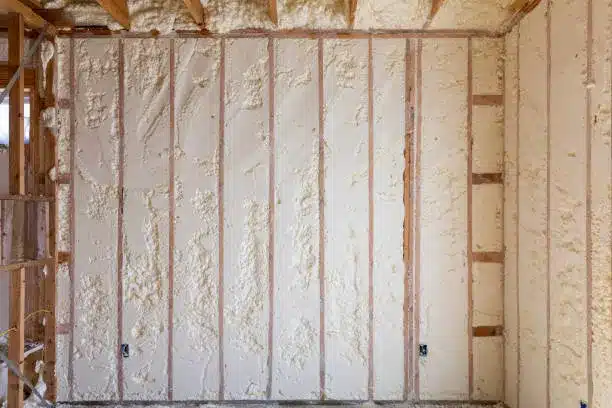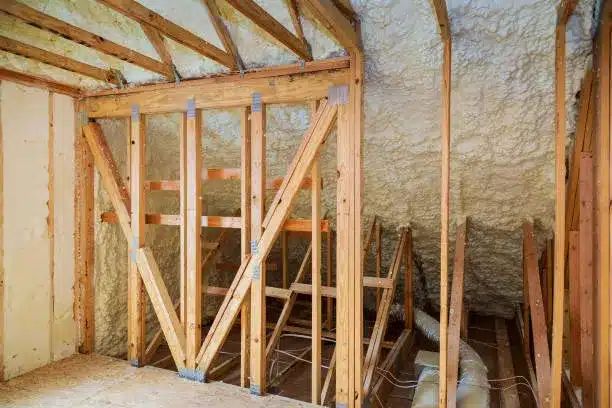Proper insulation directly reduces heating and cooling losses in residential and commercial buildings across Grants Pass. Effective insulation slows down heat transfer, maintaining stable indoor temperatures and reducing strain on HVAC systems. This leads to measurable decreases in energy use and utility bills.
In a climate like Grants Pass, which experiences temperature swings between seasons, insulation acts as a thermal barrier. Without it, heated indoor air escapes in winter, and hot outdoor air infiltrates in summer, resulting in inefficiencies that drive up energy consumption. This article outlines how insulation improves energy performance using material-specific, climate-aware strategies grounded in practical field data.
Field experience across Southern Oregon validates the material performance data shared here. Material behavior, climate interaction, and installation results are informed by completed residential and light commercial projects. All content is structured to give readers clear, usable insights.
Why Buildings in Grants Pass Lose Energy
Energy loss typically occurs through the attic, walls, floor, and roof due to conduction, air leaks, and uninsulated cavities. In Grants Pass, colder winters and warmer summers amplify the need for thermal resistance and air sealing.
Primary loss areas:
- Roof and attic (up to 25% loss if uninsulated)
- Walls (up to 35% loss from inadequate R-value)
- Floor (up to 15% from poor subfloor sealing)
- Duct systems and wall penetrations (via air leakage)
Bonus Tip: Attic air leaks often go unnoticed. Sealing around vents, recessed lighting, and attic hatches before insulation improves performance.
Performance of Insulation Types by Energy Efficiency
Different insulation materials perform better in specific applications. The following table outlines how each material compares in terms of efficiency and structural performance in Grants Pass conditions:
Energy Efficiency and Application Suitability of Common Insulation Types
| Insulation Type | R-Value per Inch | Air Barrier | Vapor Barrier | Best Use Areas | Climate Suitability (Grants Pass) |
|---|---|---|---|---|---|
| Closed-Cell Spray Foam | 6.5 | Yes | Yes | Attics, crawlspaces, wall cavities | High |
| Open-Cell Spray Foam | 3.7 | Yes | No | Interior walls, sound dampening | Moderate |
| Fiberglass Batt | 3.2 – 3.8 | No | No | Walls, ceilings | Moderate |
| Blown-In Fiberglass | 2.2 – 4.3 | Partial | No | Attics, retrofits | Moderate |
How Insulation Reduces Energy Load
Insulation slows thermal transfer, which stabilizes indoor conditions. Heating systems cycle less frequently during winter; cooling systems run more efficiently in summer. The table below outlines the technical specs that influence energy savings.
Technical Data on Insulation Impact on Energy Efficiency
| Metric | Definition | Value Range (Typical Install) |
|---|---|---|
| R-Value | Thermal resistance per inch | R13 – R49 depending on location |
| Air Infiltration Reduction | % reduction in air leaks with foam options | 30% – 50% |
| HVAC Runtime Decrease | Reduction in hours per season | 20 – 40% |
| Indoor Temp Swing | Seasonal fluctuation reduction | 6°F – 12°F |
Bonus Tip: Pairing closed-cell spray foam with membrane roofing helps reduce radiant heat transfer in commercial and metal-roofed buildings.
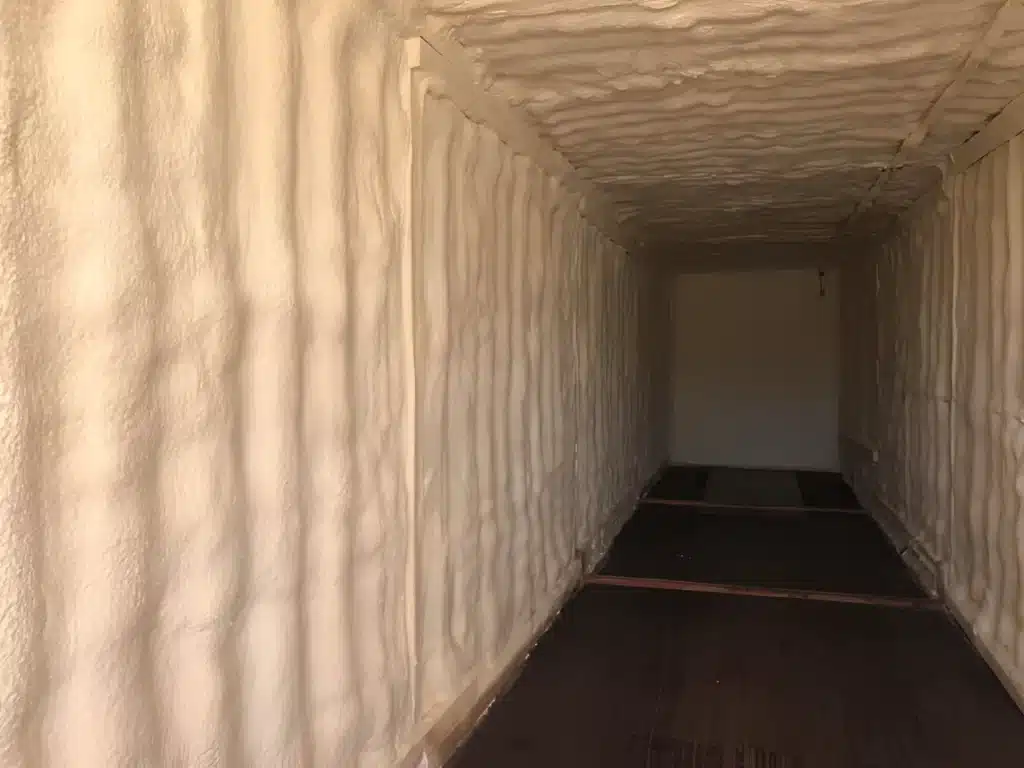
Factors That Influence Insulation Effectiveness
Several field-tested variables determine real-world insulation efficiency:
- Installation quality: Gaps and compression reduce R-value.
- Air sealing: Combined sealing and insulation always yield better performance.
- Climate zone: Grants Pass lies in Climate Zone 4C (Marine), requiring balanced heating/cooling performance.
- Ventilation: Proper attic ventilation prevents moisture buildup that could degrade insulation.
According to the U.S. Department of Energy, upgrading attic insulation alone can reduce total heating costs by up to 15% annually (DOE, 2023).
Things to Check Before Choosing Insulation
Before deciding on an insulation method, verify the following:
- Building age: Older homes may lack vapor barriers or consistent framing.
- Roof condition: Leaks compromise insulation.
- Moisture levels: High humidity or condensation risks can impact material choice.
- Access limitations: Retrofit spaces may favor blown-in options.
Bonus Tip: Thermal imaging inspections during winter show the clearest contrast for detecting energy leaks.
Services Used to Improve Energy Efficiency
The following solutions address specific energy loss conditions experienced in the Grants Pass region:
- Closed-Cell Spray Foam: High R-value and moisture resistance for attics and crawlspaces.
- Open-Cell Spray Foam: Sound absorption and interior air sealing for wall assemblies.
- Fiberglass Batt Insulation: Cost-effective choice for wall studs and ceiling joists in newer construction.
- Blown-In Insulation: Efficient retrofit solution for attics without removing drywall.
Common Questions About Energy Efficiency and Insulation in Grants Pass
How does insulation actually lower energy bills in a climate like Grants Pass?
Insulation slows heat loss in winter and blocks heat gain in summer, which reduces how often your HVAC system runs — directly lowering your energy use and utility costs.
Which insulation material performs best for Grants Pass homes?
Closed-cell spray foam offers the best all-around performance for Southern Oregon’s climate, especially in attics and crawlspaces, due to its high R-value and moisture resistance.
Do I need to replace my existing insulation to improve efficiency?
Not always. If your current insulation is dry and intact, you may be able to layer over it. However, damaged or outdated insulation should be removed for best results.
Summary of What to Know
Insulation enhances energy efficiency by reducing thermal transfer and stabilizing indoor temperatures. In Grants Pass, weather swings require high-performing materials like spray foam, especially in attics and crawlspaces. Material choice, installation method, and building conditions all influence performance. Evaluate ventilation, air sealing, and moisture risks before choosing a solution.
Contact for Further Questions or Site Assessment
For further questions or to schedule a site evaluation, contact All Foam & Insulation, LLC at (541) 826-9600 or email [email protected]. Field assessments identify the best materials and strategies based on building age, design, and Grants Pass-specific climate conditions.
Frequently Asked Questions
What insulation type works best for older homes?
Closed-cell spray foam is often preferred due to its sealing ability and high R-value in thinner layers.
Can insulation reduce noise?
Yes, open-cell spray foam and fiberglass batts both help with sound dampening between rooms.
Will attic insulation help with summer heat?
Yes. It reduces heat transfer through the roof, keeping upper levels cooler and decreasing AC use.
Is it necessary to remove old insulation?
Not always. Blown-in options can be layered on top unless moisture or contamination is present.

